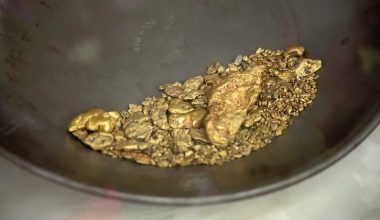Precious metals such as gold, silver and platinum are highly valued around the world for their beauty, rarity and durability. However, there are also counterfeit metals on the market that masquerade as the real thing and can fool unwary buyers.
Identifying fake precious metals can be a difficult task, but there are useful tips and techniques that can help you avoid falling victim to scams.
In this article, we will explore some of these techniques and tips to help buyers ensure they are purchasing genuine precious metals.
Learn to identify precious metals: A practical guide to recognising gold, silver and platinum
Precious metals are metals that have a high monetary value and are highly coveted for their beauty and rarity. They include gold, silver and platinum.
To identify these metals, it is important to know some physical and chemical characteristics that differentiate them. For example, gold is a bright yellow and very heavy metal, while silver is whiter and lighter. Platinum, on the other hand, is a dark grey and very dense metal.
Another way to recognise these metals is through their electrical and thermal conductivity. Gold and copper are the most conductive metals, while silver and aluminium are less conductive. Platinum, on the other hand, is an excellent thermal conductor.
In addition, each metal has its own density and hardness. Gold is a very dense and malleable metal, while silver is softer and less dense. Platinum is one of the hardest and most resistant metals.
In short, to identify precious metals it is important to know their physical and chemical properties. With this practical guide you can easily recognise gold, silver and platinum.
Learning to identify precious metals can be very useful in a variety of situations, from buying and selling jewellery to investing in precious metals. It is also an interesting and curious skill that can spark your interest in chemistry and geology.
Find out if your jewellery is gold with this simple home test
If you have gold jewellery and you want to check if it is authentic, you can do a home test with materials you probably have at home.
First, take a magnet and hold it up to your jewellery. If the jewellery sticks to the magnet, it is not real gold, as gold is not magnetic.
Then rub the jewellery on an emery stone or metal file. If the metal leaves a mark on the stone or file, it is probably not real gold, as gold is a soft metal and should not leave marks.
For the final test, pour a few drops of nitric acid on the jewellery. If the metal discolours or turns green, it is not real gold, as gold does not react with nitric acid.
It is important to note that these home tests are not 100% accurate and should not be the only way to verify the authenticity of your jewellery. If you have doubts about the authenticity of your jewellery, it is best to take it to a professional jeweller for a more accurate assessment.
In conclusion, with this home test you can get a rough idea of whether your jewellery is real gold or not. But it is always advisable to consult a specialist for absolute certainty.
And you, have you ever tested your jewellery to see if it is real gold? Share your experience in the comments!
The effect of lemon on gold: Does it protect or damage it?
The popular belief is that lemon can clean and protect gold. However, the reality is that lemon can damage gold.
Lemon is acidic, and acid can corrode gold. If left in contact with gold for a long period of time, lemon can cause permanent damage to the metal.
In addition, lemon may contain abrasive particles that can scratch the surface of the gold, especially if applied with a hard cloth or brush.
Therefore, it is important to use caution when using lemon on gold and not to leave it in contact with the metal for a long period of time. It is best to use products specifically designed for cleaning gold jewellery.
In short, lemon can damage gold, and it is not recommended to use it as a way to clean or protect the metal.
Reflection:
Despite popular belief, it is important to do your research before using any home methods to clean gold jewellery. It is best to follow the recommendations of professionals and use specific products to ensure the protection and durability of the metal.
Discover the most effective techniques for identifying if a metal is real gold
Gold is a very valuable and appreciated metal all over the world. But how do you know if a metal is genuine gold? There are a few techniques that can help you identify it effectively.
One of the most common ways to identify gold is through its weight and density. Gold is a heavy and dense metal, so its weight should be greater than that of other metals. Also, if you dip a piece in water, the gold should also be denser and sink faster.
Another technique is the acid test. This consists of applying a small amount of nitric acid to a part of the piece and observing the reaction. If the area turns green, it is not real gold, but if no change occurs, it is probably real gold.
The magnetisation test can also be useful. Gold is not magnetic, so if a magnet does not attract the piece, it is more likely to be real gold.
Finally, the scratch test involves rubbing the piece against a porcelain stone. If the streak it leaves is golden and shiny, it is likely to be real gold.
In conclusion, there are several techniques that can help you identify if a metal is real gold. It is important to be careful and use several techniques to confirm the authenticity of gold.
Remember that gold is a very valuable metal and you should always be sure before buying or selling any piece.
We hope this article has been helpful in identifying fake precious metals. Remember to always follow the useful tips and techniques we have provided to make sure you are buying a truly valuable metal.
Don’t forget to share this information with your friends and family so that they too can be informed on how to identify fake precious metals. See you next time!

